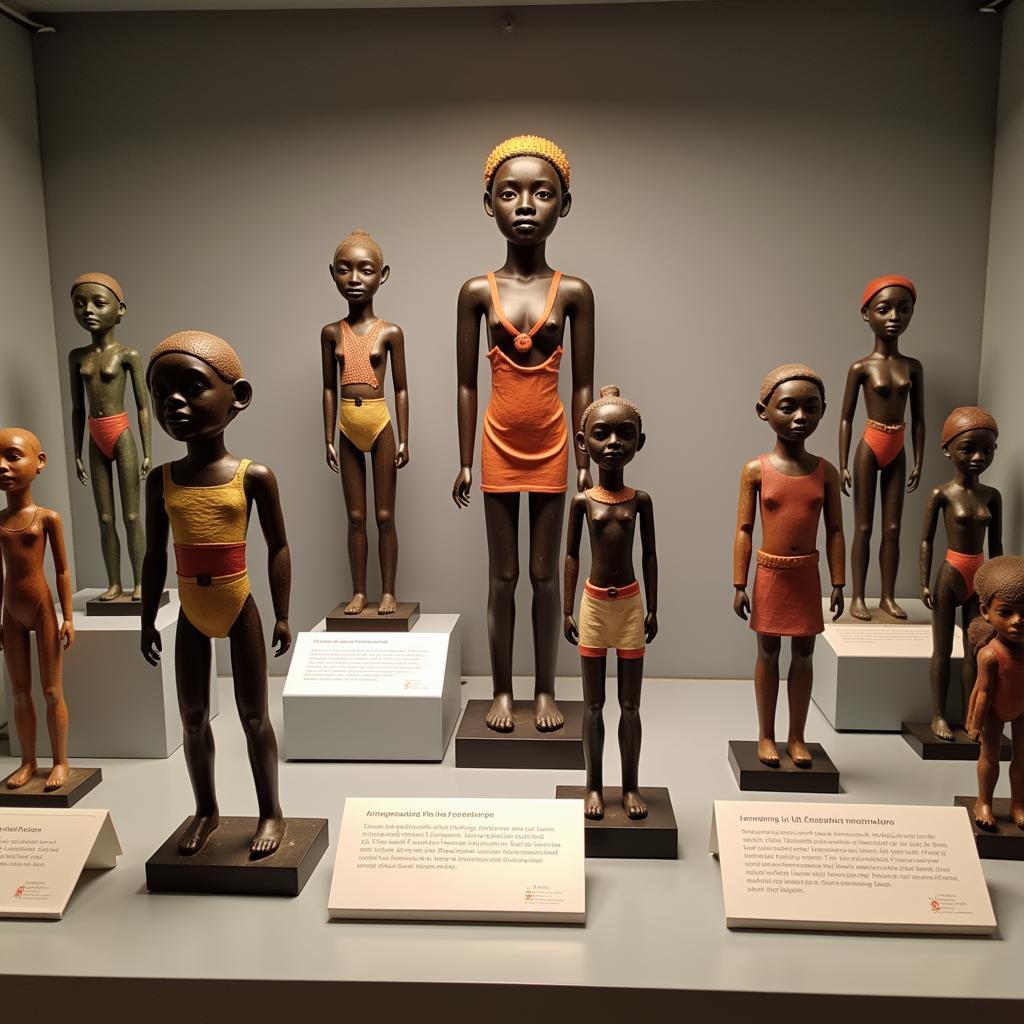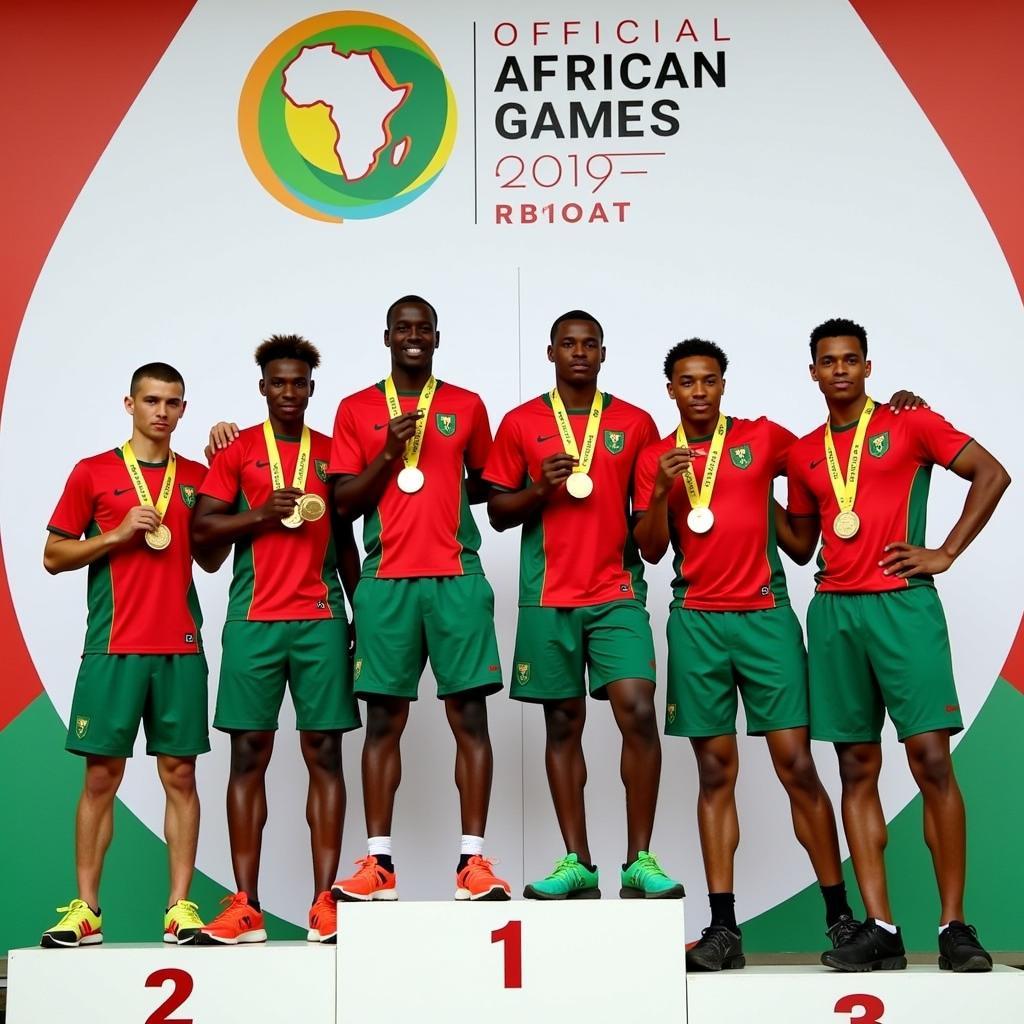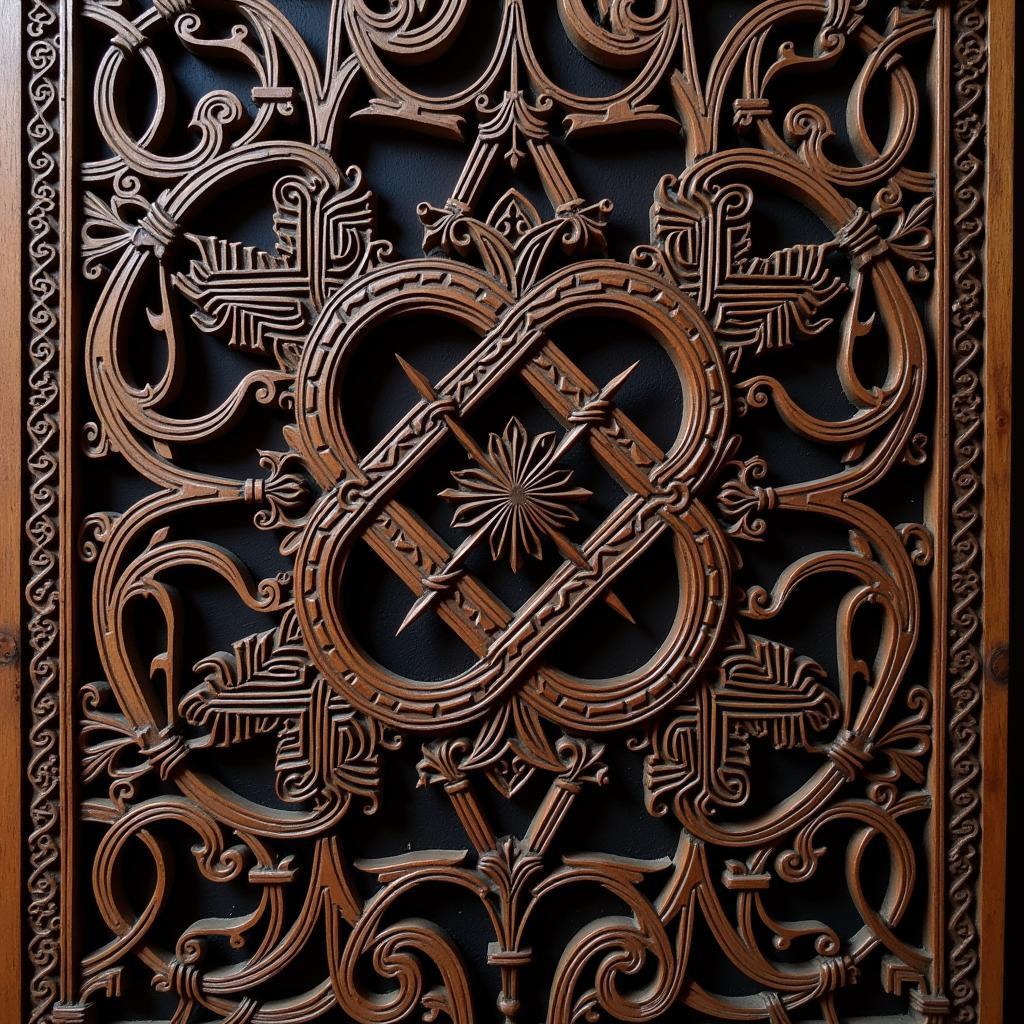Exploring the Mystical World of African Fantasy Art
African Fantasy Art is a vibrant and captivating genre that draws inspiration from the rich tapestry of African mythology, folklore, and cultural traditions. It’s a realm where ancient spirits dance with futuristic technology, where powerful deities walk among humans, and where the boundaries of reality blur with the magic of the unseen world. This captivating art form offers a unique lens through which to explore the diverse cultures and imaginative landscapes of the African continent.
Diving Deep into the Roots of African Fantasy Art
African fantasy art is not a monolithic entity. It’s a diverse expression that varies significantly across regions and cultures. From the vibrant masquerades of West Africa to the intricate beadwork of the Maasai, each artistic tradition contributes a unique flavor to the genre. These influences weave together to create a compelling visual narrative that speaks to the power of imagination and the enduring spirit of African storytelling. What makes African fantasy art so compelling is its ability to blend the ancient with the modern, creating a visual language that resonates with both traditional and contemporary audiences. For instance, the fantastical creatures of African folklore are often depicted alongside elements of science fiction, creating a unique blend of the past and the future.
One key aspect to understanding African fantasy art is recognizing the integral role of spirituality and ancestral veneration. Many pieces depict deities, spirits, and mythical creatures that hold significant meaning within various African cosmologies. This connection to the spiritual realm adds a layer of depth and complexity to the artwork, transforming it into a visual representation of deeply held beliefs and traditions.
After this introduction to the world of African fantasy art, you might want to explore more African Fiction books.
The Impact of African Mythology on Fantasy Art
African mythology is a wellspring of inspiration for fantasy artists. Tales of shape-shifting creatures, powerful gods and goddesses, and epic battles provide a rich foundation for artistic exploration. These stories, passed down through generations, offer a glimpse into the values, beliefs, and worldviews of diverse African cultures. The depiction of these mythical figures in art allows for the preservation and celebration of these cultural narratives. Consider the frequent depiction of Anansi the Spider, a trickster god prominent in West African folklore, whose cunning and wisdom are often visualized in captivating artwork.
What are the Common Themes in African Fantasy Art?
Themes of heroism, resilience, and the struggle against oppression are often prominent in African fantasy art. These themes resonate deeply with the historical experiences of many African communities and provide a powerful platform for artistic expression. The artwork often serves as a means of reclaiming narratives and celebrating the strength and resilience of African people. These themes also reflect the ongoing dialogue between tradition and modernity, as artists navigate the complexities of cultural identity in a rapidly changing world.
For those interested in African American themes, here are some African American party themes.
How is African Fantasy Art Different from Western Fantasy Art?
While African fantasy art shares some similarities with Western fantasy art, there are key distinctions that set it apart. One significant difference lies in the source material. African fantasy art draws heavily from indigenous African mythologies and folklore, creating a unique visual language that is distinct from the European-centric traditions that often inform Western fantasy. This difference in source material leads to the depiction of unique characters, creatures, and settings that are not typically found in Western fantasy. For example, while dragons are a staple of Western fantasy, African fantasy art might feature mythical creatures like the Adze, a vampire-like creature from Togo and Ghana, or the Kongamato, a pterosaur-like cryptid reported in various parts of Africa. Another key difference is the emphasis on community and collective identity, often reflecting the importance of communal values in many African cultures.
If you’re looking for African American fantasy books, check out this collection. Furthermore, you can also explore a wider range of African Fiction Books for more diverse narratives.
The Future of African Fantasy Art
African fantasy art is a dynamic and evolving genre with a growing global presence. With increasing access to technology and platforms for artistic expression, African artists are gaining wider recognition for their unique and captivating work. This increased visibility is helping to challenge stereotypes and promote a more nuanced understanding of African cultures and artistic traditions.
Conclusion
African fantasy art provides a powerful window into the rich cultural heritage and imaginative landscapes of the African continent. By exploring the myths, folklore, and traditions that inspire this genre, we gain a deeper appreciation for the diverse artistic expressions and the enduring power of storytelling in Africa. African fantasy art is a vibrant testament to the power of creativity and the ongoing evolution of African artistic traditions. It is an invitation to explore the magic, mystery, and boundless imagination of a continent brimming with stories waiting to be told.
For a broader selection, consider looking into African American fiction books.
FAQ
-
What inspires African fantasy art? African mythology, folklore, cultural traditions, and historical experiences are primary sources of inspiration.
-
What are some common themes in African fantasy art? Heroism, resilience, the struggle against oppression, and the interplay between tradition and modernity are frequently explored.
-
How is African fantasy art different from Western fantasy art? African fantasy art often draws from indigenous African mythologies and emphasizes community and collective identity, distinguishing it from the European-centric traditions of Western fantasy.
-
Who are some notable African fantasy artists? While the field is vast and constantly evolving, research can reveal many talented artists contributing to this genre.
-
Where can I find more information on African fantasy art? Online resources, art galleries, and cultural centers dedicated to African art are excellent starting points.
-
What is the significance of spirituality in African fantasy art? Spirituality and ancestral veneration play a crucial role, with many pieces depicting deities, spirits, and mythical creatures that hold deep meaning within African cosmologies.
-
How is technology impacting African fantasy art? Increased access to technology and digital platforms is providing African fantasy artists with new avenues for creation, distribution, and global recognition.
There might be content addressing African ebony white man xxx that some might find relevant, though it may not directly relate to fantasy art.
Need More Help?
For any assistance or further inquiries, please don’t hesitate to contact us.
Phone: +255768904061
Email: kaka.mag@gmail.com
Address: Mbarali DC Mawindi, Kangaga, Tanzania
Our customer service team is available 24/7 to assist you.


